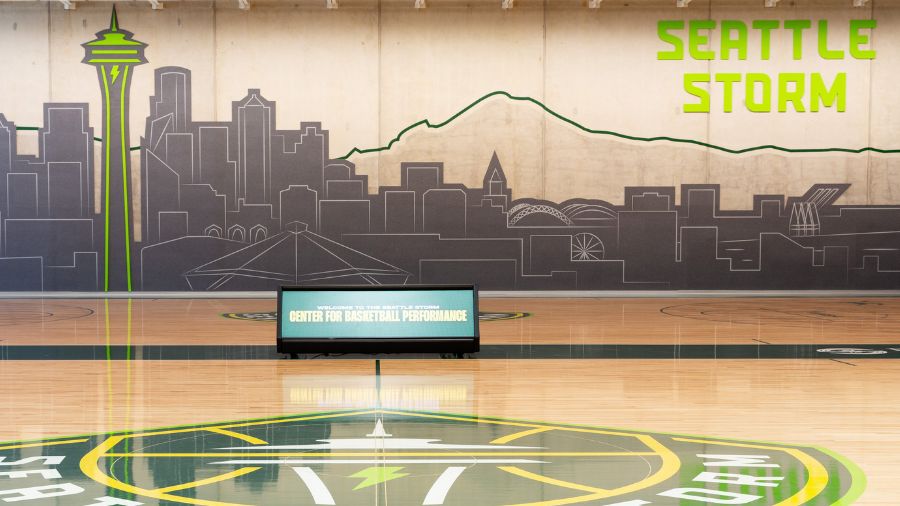Firefighter recalls days spent responding to tragic Oso landslide
Jul 30, 2018, 6:09 AM | Updated: Aug 7, 2018, 11:17 am
Gregg Sieloff was a Lynnwood firefighter for more than 30 years and also a member of the Northwest Incident Management Team — a group of specially-trained first responders who deploy to large emergencies.
On the morning of March 22, 2014, Sieloff had plans, until he got a page.
“The page that we got initially said that there was a major mudslide and that’s all it said — show up at Arlington at this time,” Sieloff said.
It was his first deployment with the response team. They tackled two sides of the major mudslide — Arlington and Darrington. He got to the command center in Arlington and a plan was made to send him to the Darrington side the next day.
There was no phone service, no power at first, and no cable. Only radio communications. And on the Darrington side, flooding had pushed crews a mile back. They couldn’t get in. On day two, there was so much concern of flooding the response was limited — one medical unit on each side and one piece of heavy equipment.
RELATED: Oso memorial, mailboxes planned for memorial site
“When all of the citizens who were going down in the debris field showed up to try to dig and search, they get there and there’s nobody there, there’s not a soul anywhere from the response and they just can’t believe their eyes,” Sieloff said. “Because the day before there were hundreds of people there and there’s nothing.”
Commanders were waiting for word from hydrologists doing fly-overs to find out if it was safe for crews to go in. But locals with missing loved ones were not waiting. There was a tense community meeting on the Darrington side with angry locals frustrated by the lack of progress.
One person showed up at city hall on day three with pictures of firefighters in the debris field that had equipment, but didn’t appear to be doing anything. Another picture showed locals digging.
Sieloff asked where those locals were digging. He and others on the team finally got a break. The locals escorted them to the logging roads they were using to get into that side of the slide area. That’s when Sieloff says the Darrington side really got going.
At first, bureaucracy got in the way of resources.
“So we restructured and we created an incident command structure and I became incident commander … which gives us the ability to order resources without having to worry about who pays for it,” Sieloff said. “And we also asked all the locals: ‘Hey, we can’t guarantee you’re going to get paid, but if you come we’ll put you to work.’ And they came out of the woodwork. They were everywhere.”
When they worked out all the details with volunteers they had a system up and running. They needed more equipment and the locals in the logging community had it — everything from chainsaws to heavy equipment that eventually helped build a temporary road between the two sides of the slide.
Several days after the incident, it was pretty clear this was now a recovery mission — not a rescue operation any longer. But that did not change the sense of urgency to find the victims. Recovery of everyone lost in the slide was the top priority in that first week.
They got a lot of help from a local who was in the debris field immediately searching for his sister who had left from Darrington and was driving on 530 toward Arlington when the slide hit. That man knew the neighborhood well and was able to show firefighters where the houses used to be so they knew where to focus their search efforts. His sister was eventually found dead in her car among the debris.
Working with the community the and heartfelt response to this horrific disaster is something that will stick with Sieloff for the rest of his days. He’s not a member of the team behind the current memorial effort. But he’s willing to share his story once again because he believes it’s so important to get this memorial built for the families, and everyone else.
“I think it’s a huge thing for the first responders cause so many of them were involved in that, had a play in it, and when you go up there it’s just something that recognizes that ‘Hey, I was here. I was here, I helped on this, right?'” Sieloff said. “I also think that the citizen part of it is a big thing.”
On July 22, 2014 — exactly three months after the slide — Sieloff and other firefighters went to a Mariner’s game. They were honored for their response to the slide. That’s when they got word that the final victim had been recovered.
It was the result they had all worked so hard for during those initial days and the weeks that followed. Sieloff says locals were adamant they didn’t want to drive down SR 530 with undiscovered remains.
They didn’t want it to be a graveyard.
Snohomish County and KIRO Radio are helping the families of those killed in the 2014 Oso landslide raise $6 million for a memorial at the tragic site to not only honor the 43 people killed, the survivors, and first responders, but also preserve the story of what happened there for generations to come.













